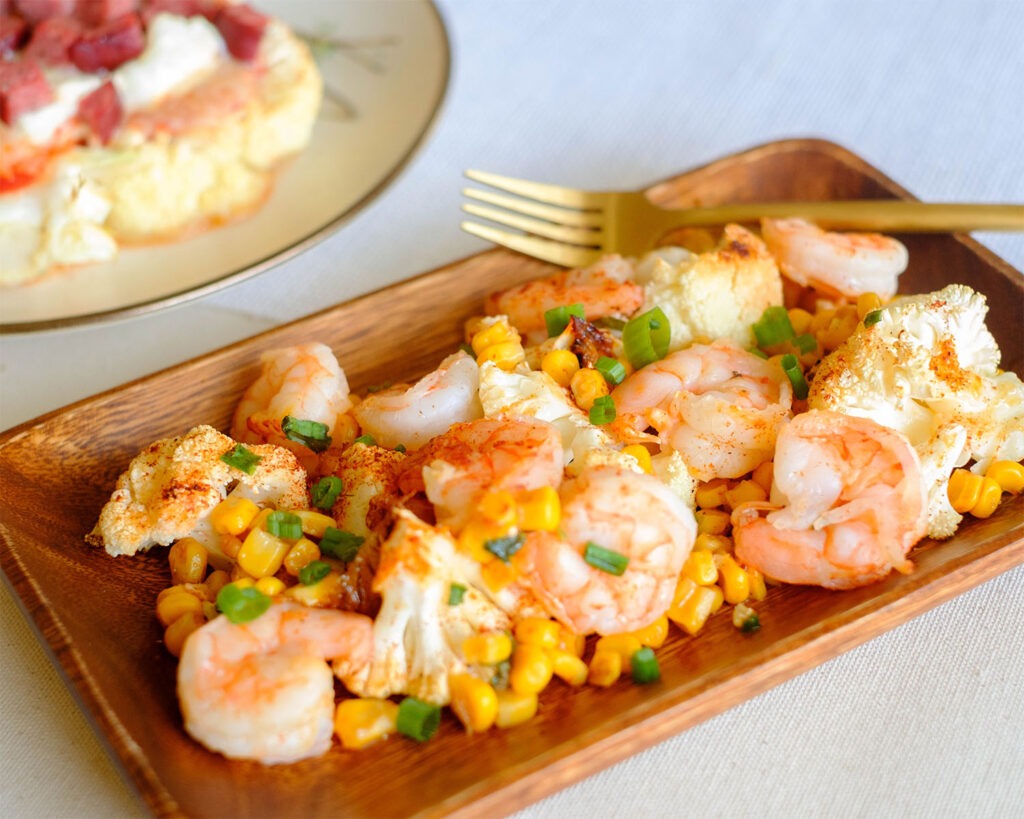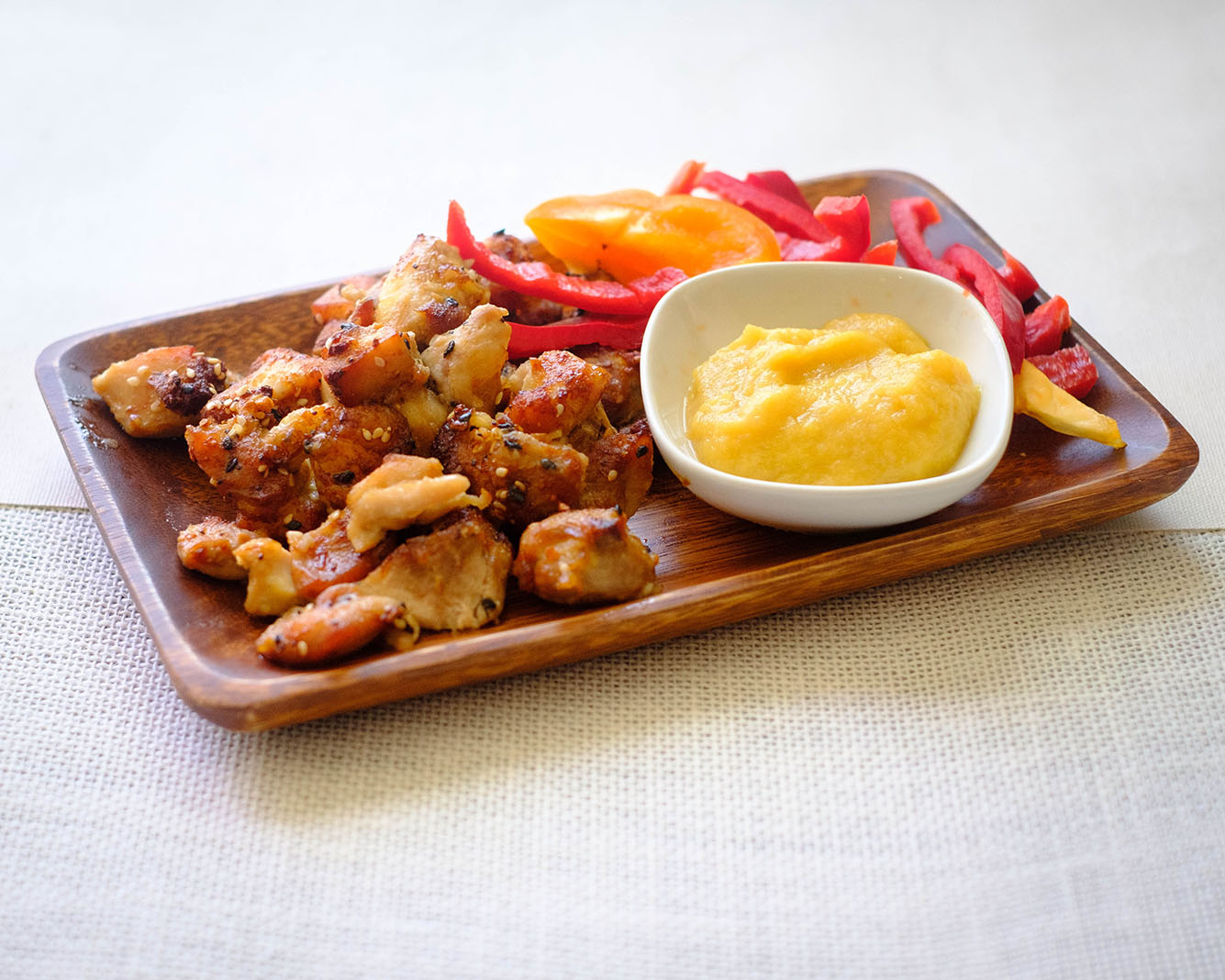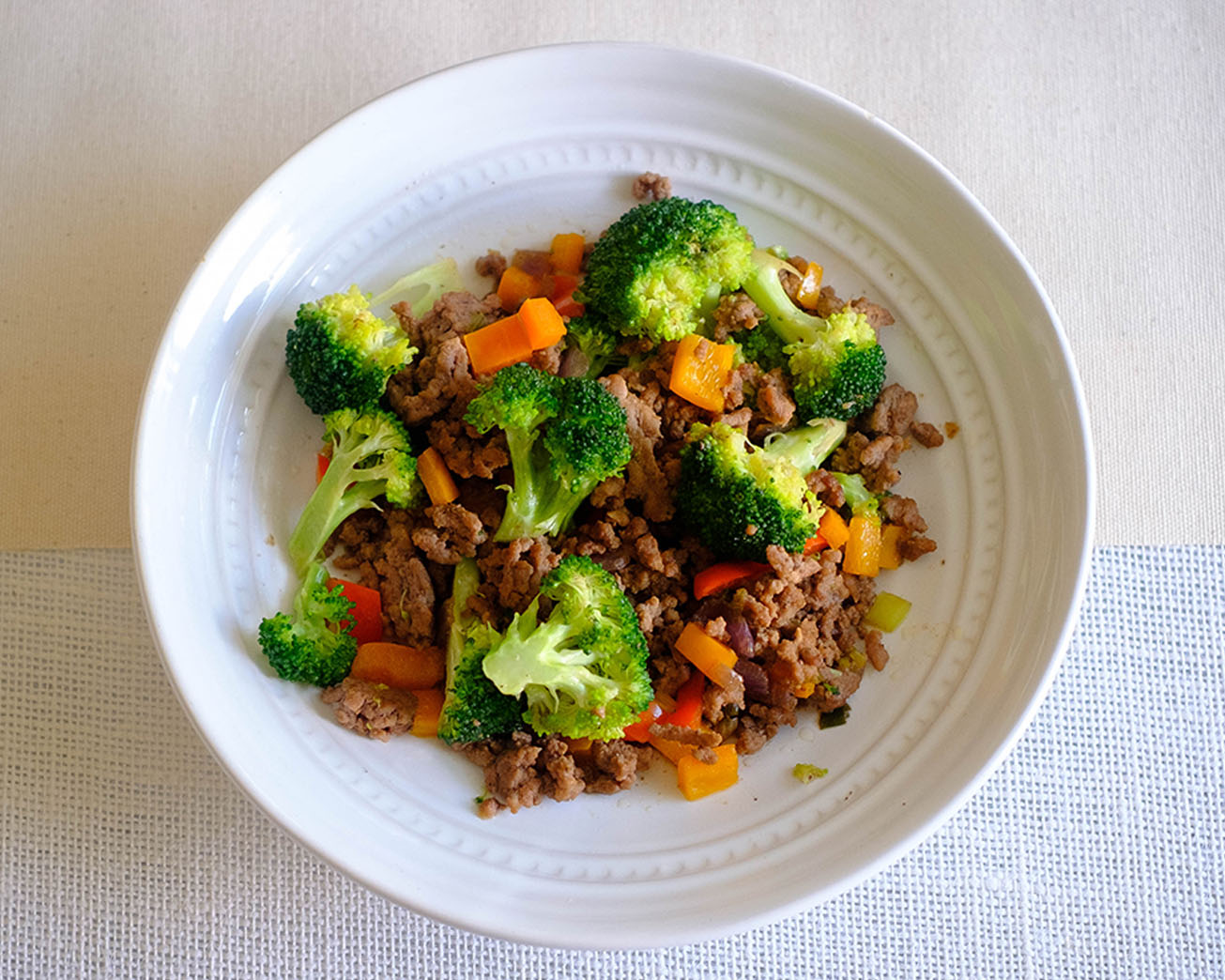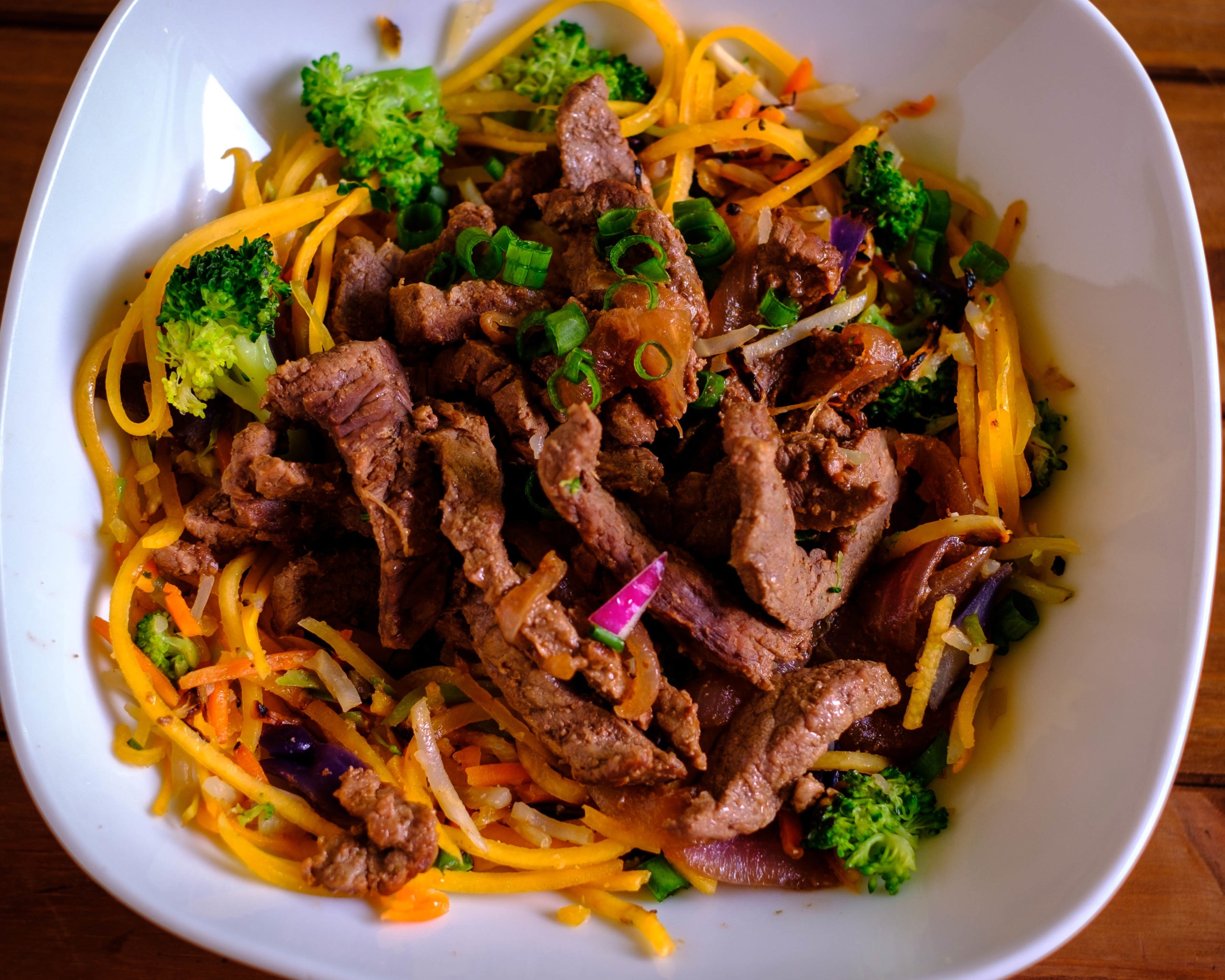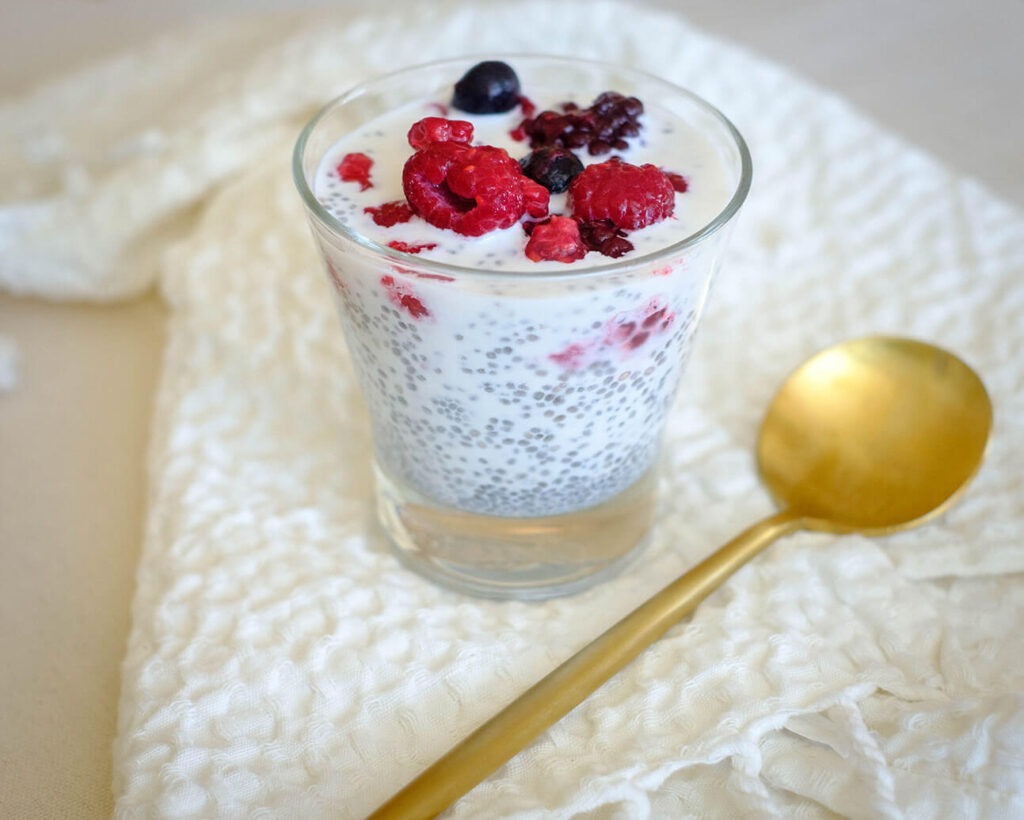
Our top 10 shrimp meal prep recipes is a perfect place to start your nutritious and delicious meal prep journey or if you’re seasoned meal prepper, you can get some inspiration for your next round of recipes. Shrimp is a lean, high protein ingredient that is versatile and available in a wide range of styles. From frozen to fresh, there are benefits of each kind of shrimp.
Shrimp is not known as the most affordable protein option however there are ways to purchase it that make it a better. Frozen is a great choice for affordability and for flexibility on your timeline. Shrimp won’t last long in the fridge uncooked or cooked so frozen is a totally viable option and some of our recipes below leverage frozen over raw. The texture is a little different but not noticeably when added to a sauce or soup.
Fresh shrimp are delicious although laborious. It takes time to clean them if you don’t buy them cleaned already but the fresh flavor of grilled or pan-seared shrimp is a unique and beautiful experience. Fresh shrimp are subject to seasonality as well. These days it’s easy to find “fresh” seafood year round but shrimp season is from May to December.
When buying fresh shrimp simply start by asking the worker behind the counter. Ask about the freshness or how long it’s been sitting out. Check the smell. if it smells pungent you may want to consider another option. Check the texture, shrimp should be firm, plump, and slightly translucent. They should never be mushy or slimy.
1. Shrimp & Cabbage Stir Fry
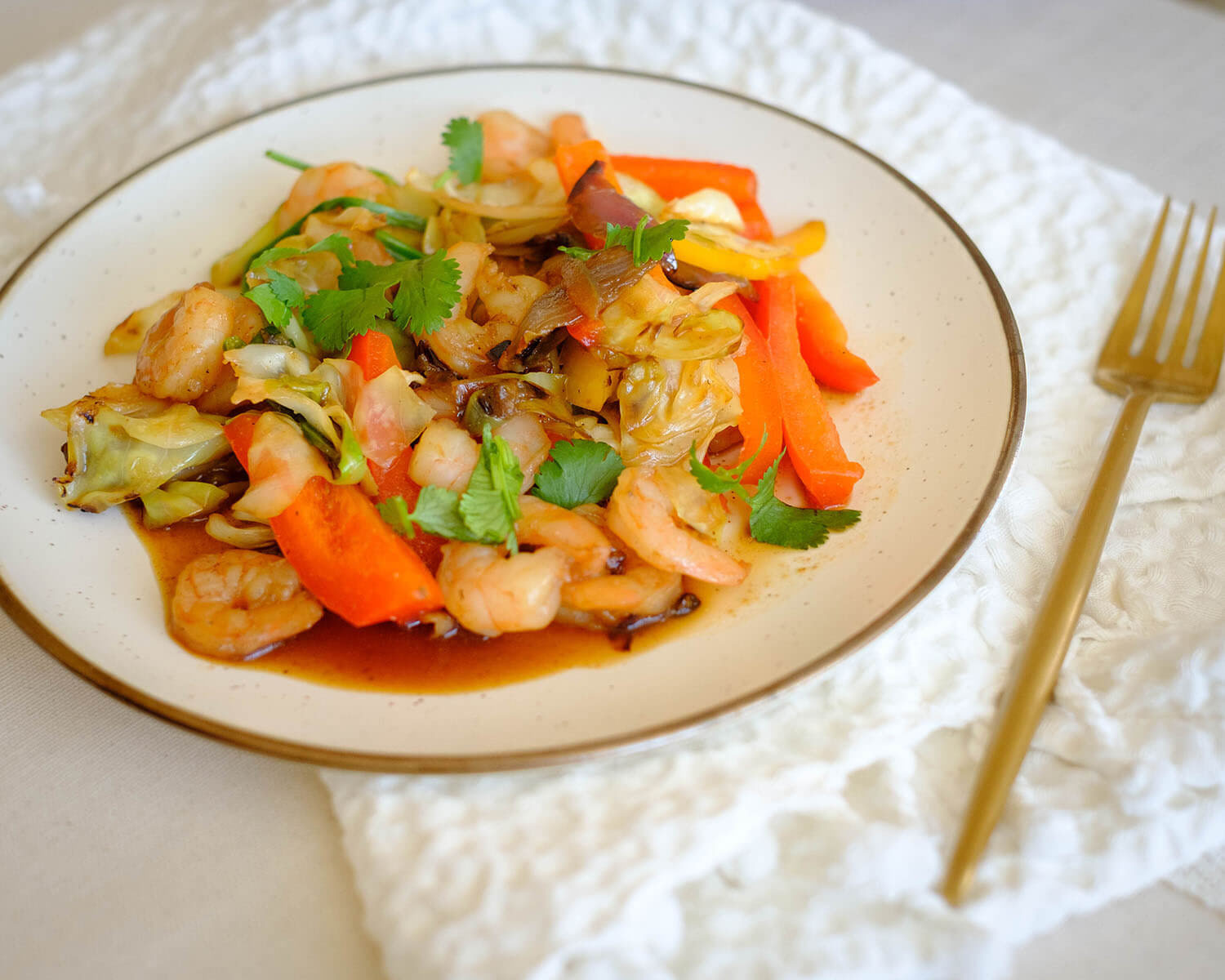
shrimp and cabbage stir fry. Brace yourselves for a burst of flavors, because this dish is not only a delightful treat but also an absolute winner when it comes to easy and delicious meal prep.
2. Air Fryer Shrimp and Pineapple Kebabs
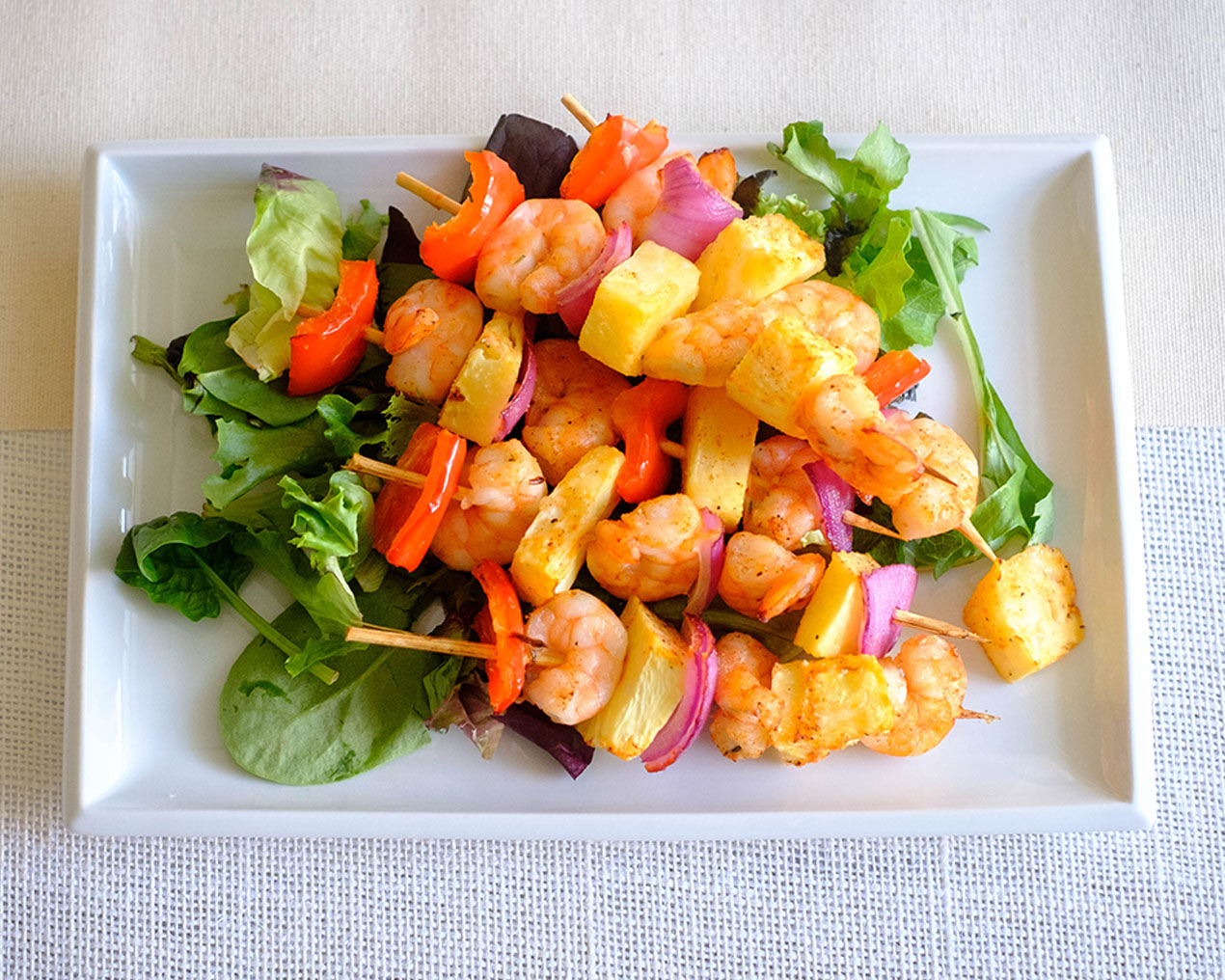
Quick and easy Air Fryer Shrimp and Pineapple kebabs filled with tropical flavors that you’re going to love for your weekly meal prep. This post may contain affiliate links. Please see our privacy policy for details. Why We Enjoy These Air Fryer Shrimp Kebabs Food on skewers always just makes it more fun to eat!…
3. Shrimp Ramen
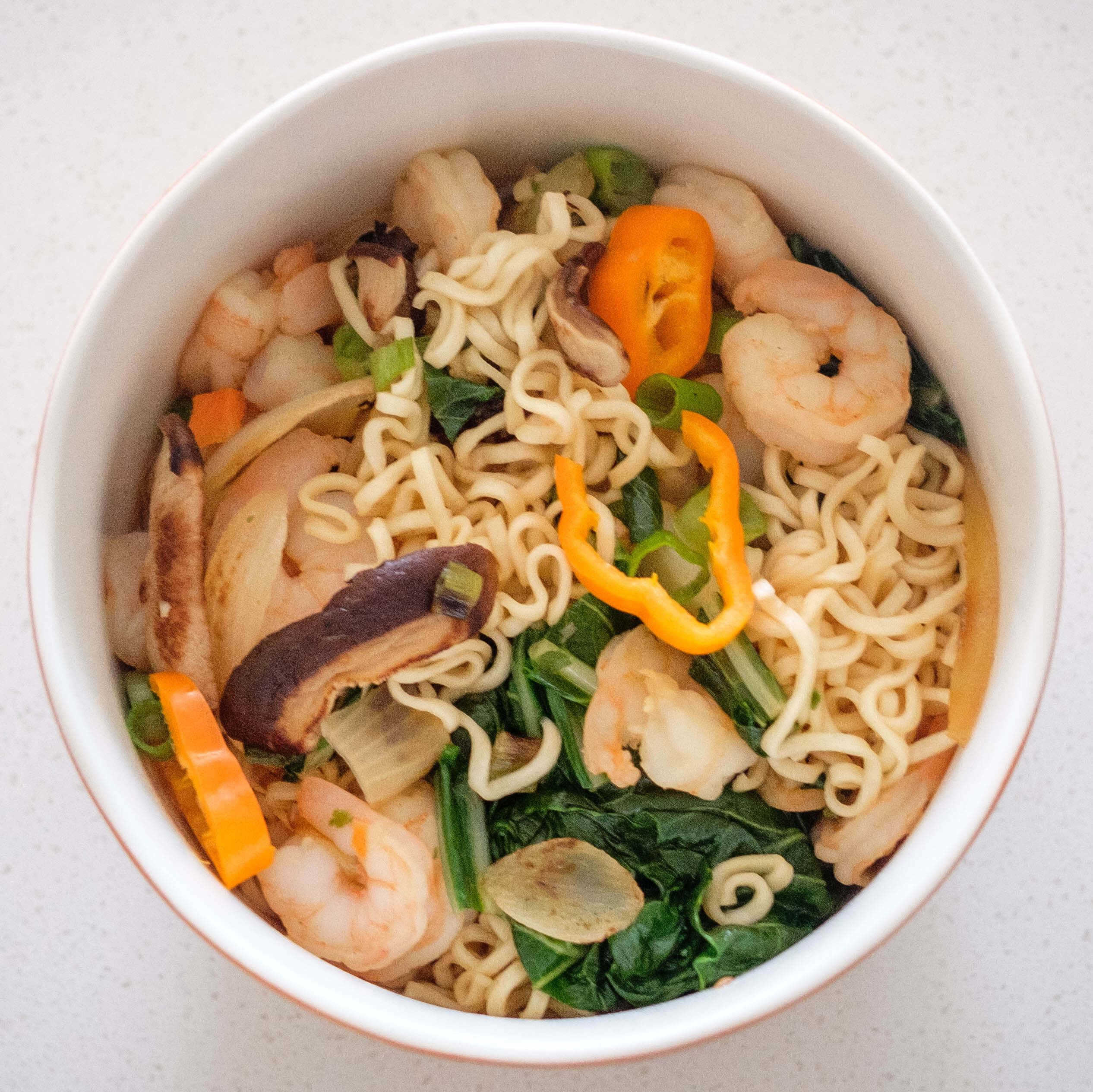
Ramen is easily one of our favorite dishes at PrepYoSelf, especially heading into fall. As the weather cools there’s nothing better than a warm bowl of homemade ramen noodle soup. Even better, our Easy Shrimp Ramen is loaded with healthy ingredients with powerful benefits like the antioxidants in mushrooms and vitamins in bok choy. Antioxidants…
4. Sheet Pan Shrimp and Cauliflower with Corn
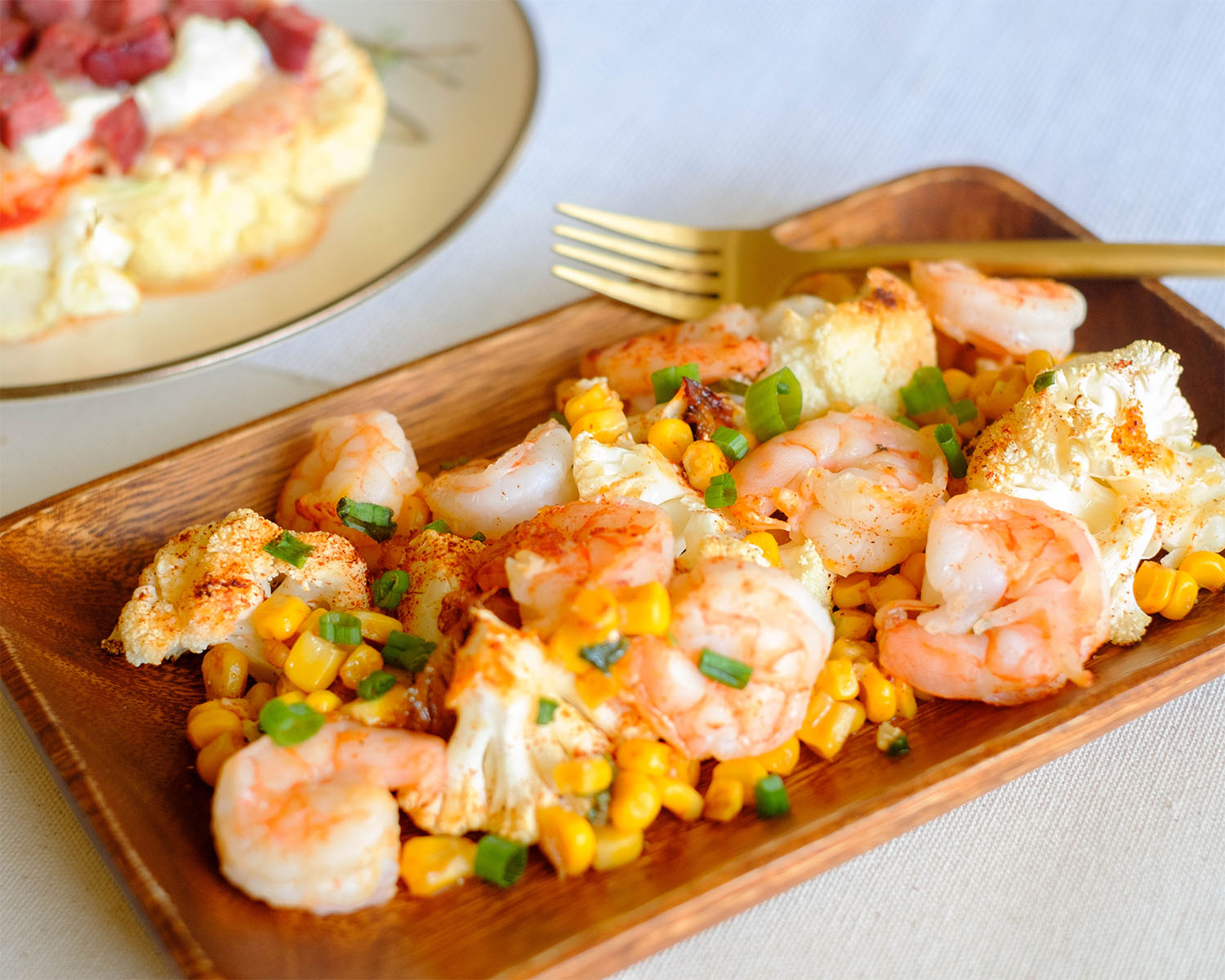
Easy Sheet Pan Shrimp with a corn and cauliflower bake that is ready in less than 20 minutes! This post may contain affiliate links. Please see our privacy policy for details. This sheet pan lunch is a lighter version of a shrimp boil that makes it an easy weekday meal prep. Here’s What We Love…
5. Citrus Shrimp Quinoa Spinach Salad
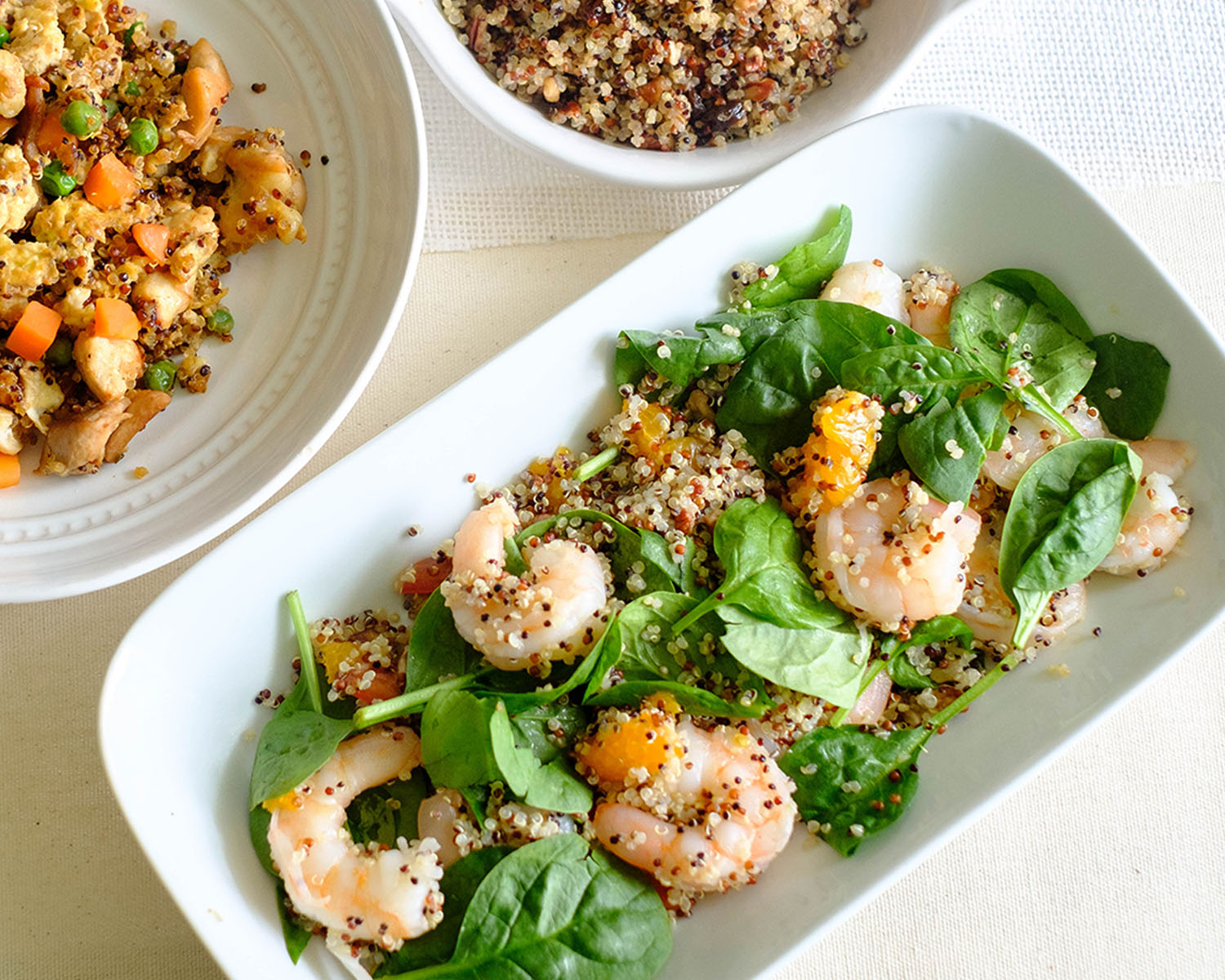
This citrus flavored shrimp quinoa with spinach salad is a fresh and easy lunch meal prep that you can prep for yourself in less than 20 minutes! This post may contain affiliate links. Please see our privacy policy for details. Reasons Why We Love This Shrimp Quinoa Spinach Salad This salad has vibrant flavors paired…
6. Stir Fry Shrimp with Spaghetti Squash
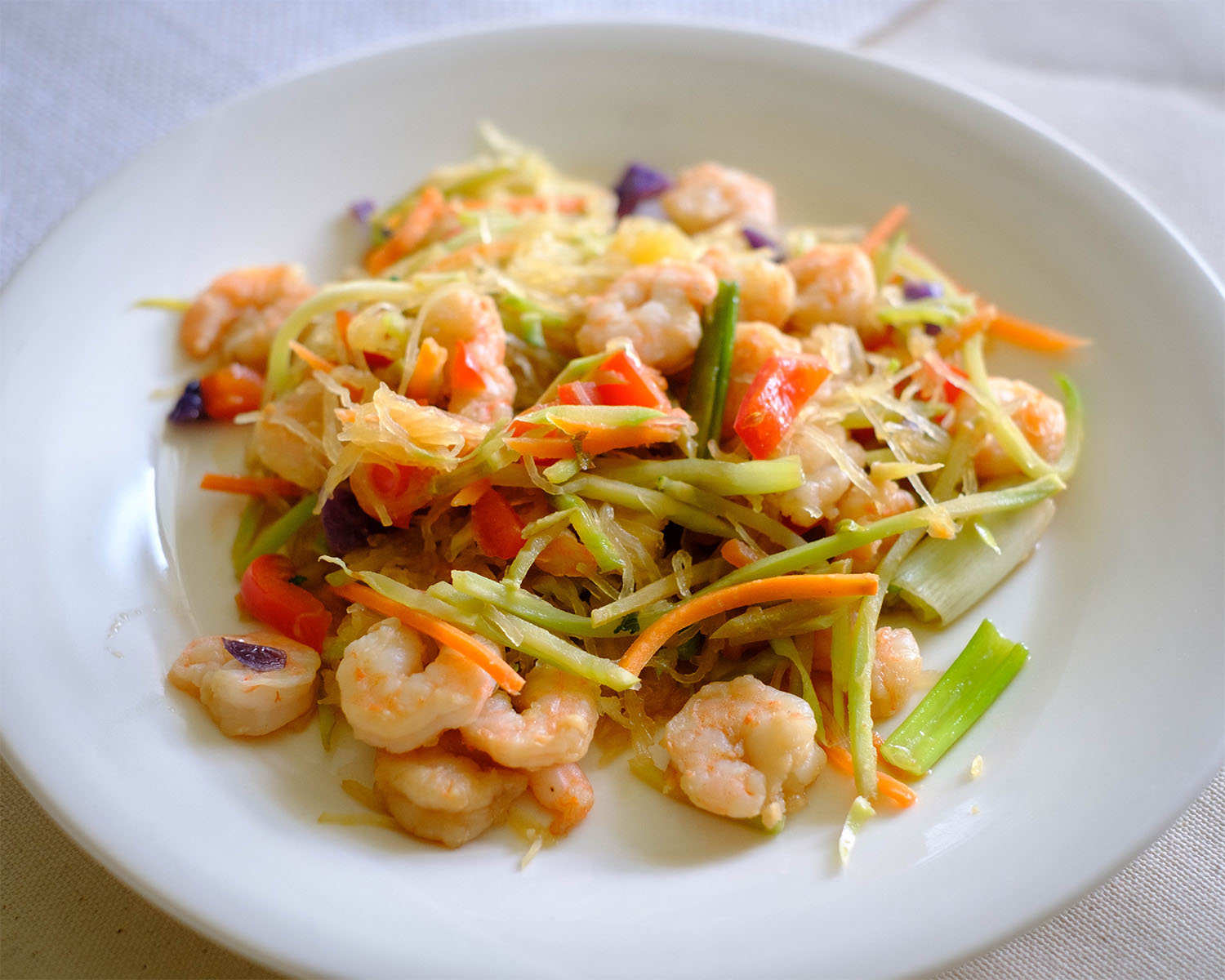
shrimp and cabbage stir fry. Brace yourselves for a burst of flavors, because this dish is not only a delightful treat but also an absolute winner when it comes to easy and delicious meal prep.
7. Low Carb Shrimp Zucchini Boats

If you’re on the hunt for a quick, budget-friendly, and incredibly tasty dish that’s low carb and high in protein, you’ve hit the jackpot with these Shrimp & Artichoke Zucchini Boats! Picture this: tender zucchini filled with a savory shrimp and artichoke mixture, all topped with a sprinkle of Parmesan and fresh Roma tomatoes. Not…
8. Baked Shrimp with Panko Breaded Asparagus
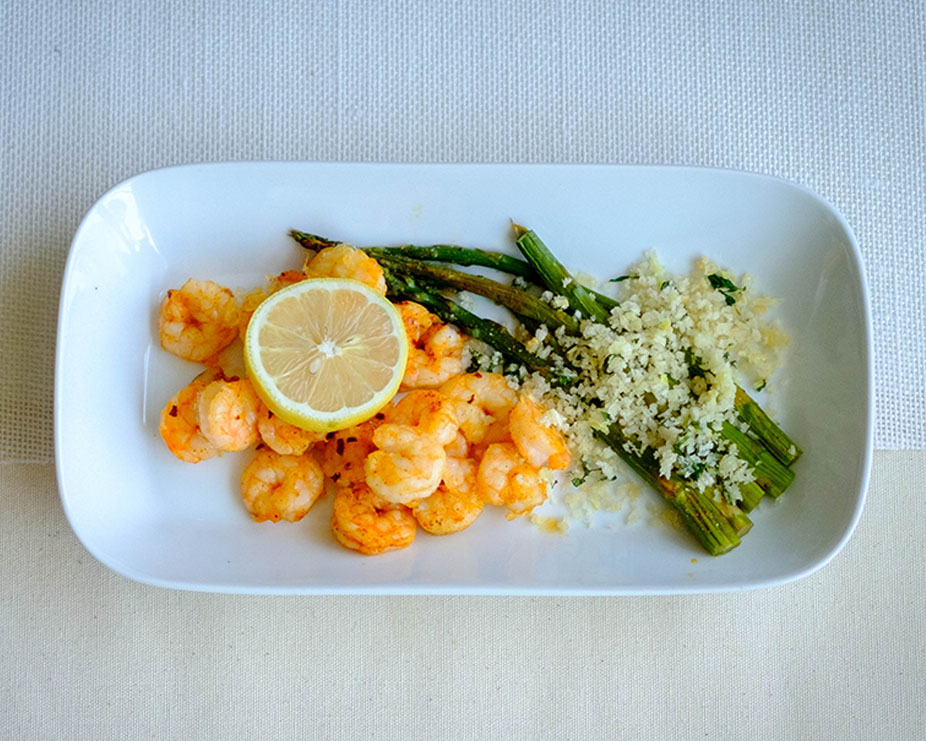
Garlic lemon shrimp and crispy panko-crusted asparagus all baked together in one pan! This super easy baked shrimp recipe keeps the dishes to a minimum and the flavor clean and crisp. This post may contain affiliate links. Please see our privacy policy for details. Need a game plan for your midweek dinner after a long…
9. Shrimp with Corn Medley
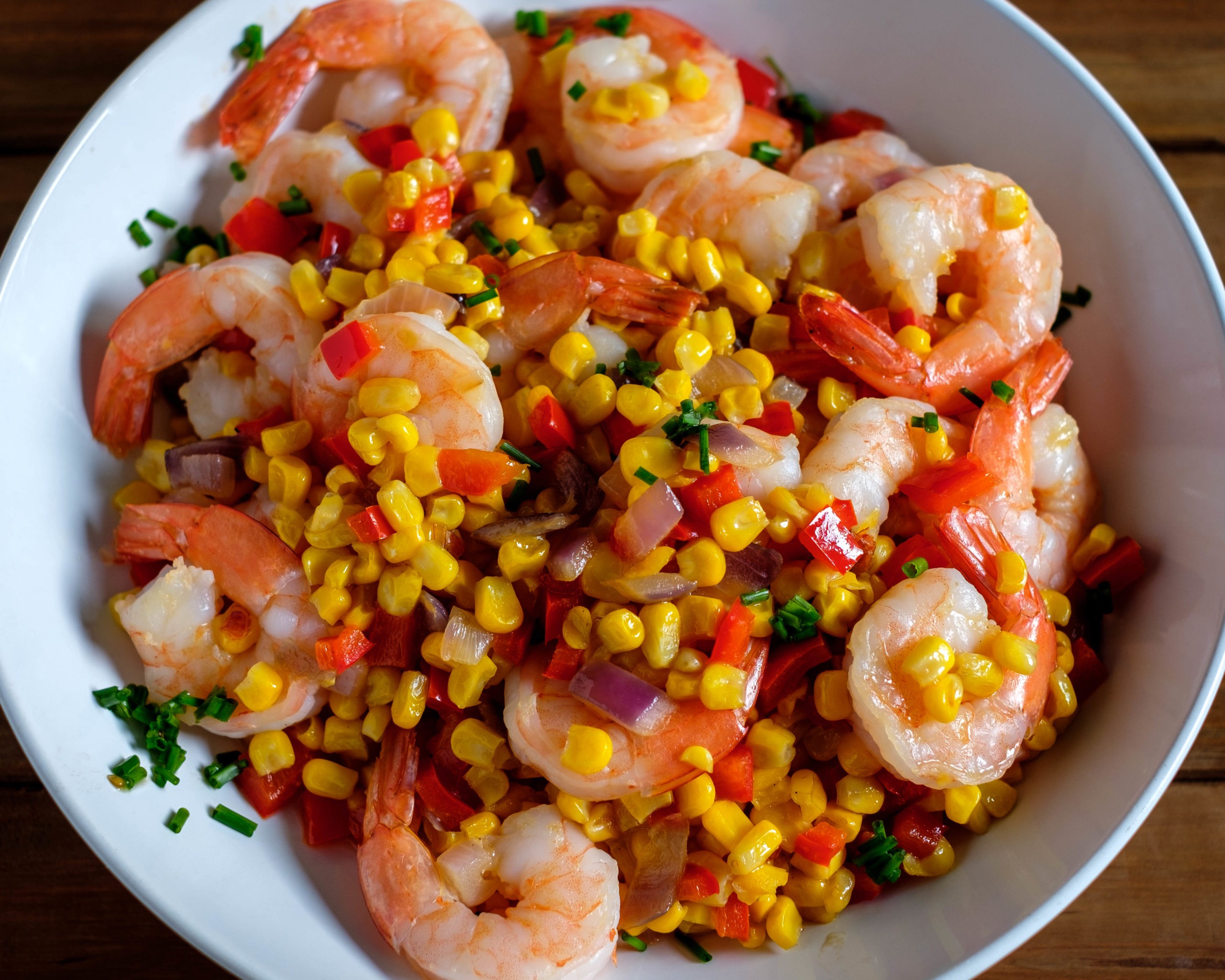
10. Healthy Shrimp And Bacon-Wrapped Broccolini
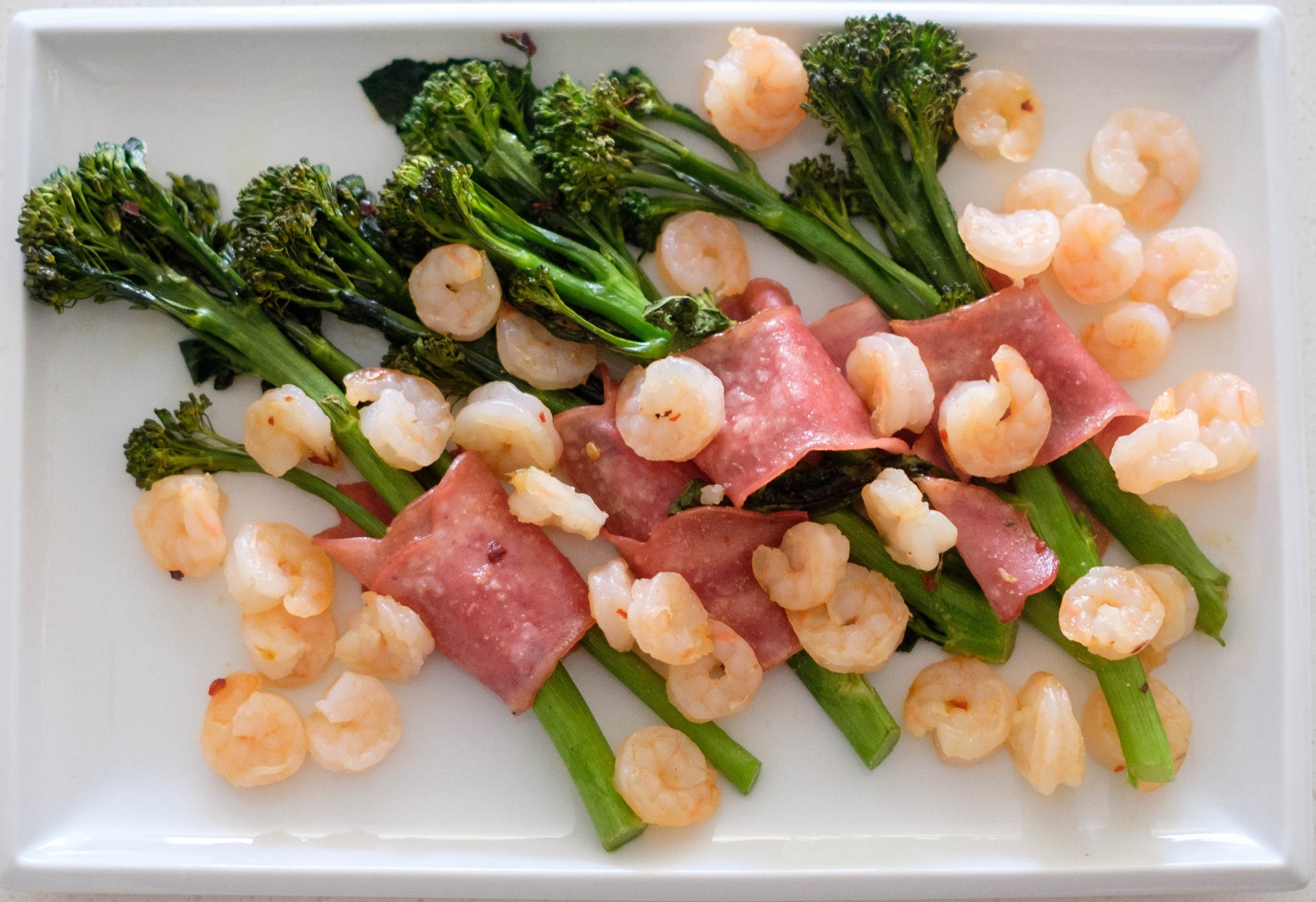
Perfect for a party appetizer, side dish, or as a pre-meal snack to impress, our shrimp with turkey bacon wrapped broccolini is a crowd pleaser no matter the crowd you’re trying to please. Who doesn’t love bacon? Psychopaths that’s who. (Sorry vegans, we will let you slide.) Ease of Making: Easy In this recipe, we…
More about Shrimp Meal Prep:
- Buy the Right Shrimp – Avoid the extra work and get deveined shrimp to spare yourself. Fresh is great but frozen can work as well, depending on the recipe.
- Use Quick-Cooking Methods – Shrimp cooks fast. Stick to recipes that are designed for a quick protein or adjust the cooking method to adjust for it.
- Season Lightly – Shrimp can be a subtle flavor so be careful with your seasoning and consider the other elements of the meal. If there is a sauce, it might overpower the shrimp. Consider a garlic butter sauce or lemon herb sauce to keep it light or strong with a peanut or curry sauce.
- Store Properly – Keep cooked shrimp in an airtight container in the fridge for up to 3 days, or freeze in portioned bags for up to 3 months to maintain freshness. Fresh shrimp may only last a day or two or be prepared to cook the same day of purchase or next.
- Reheat Gently – To prevent rubbery shrimp, reheat quickly over low heat on the stove or in short bursts in the microwave. Add a splash of water or sauce to keep it moist.

